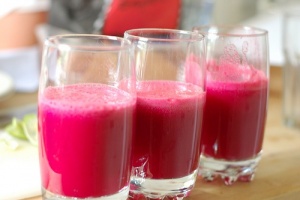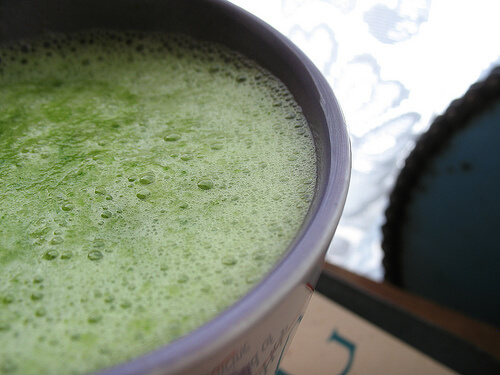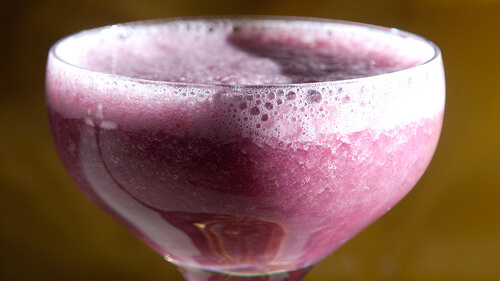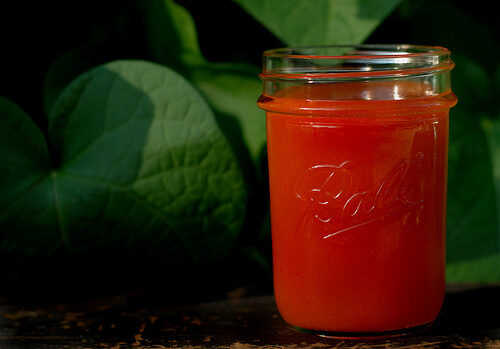Juices and Smoothies that May Help Fight Hair Loss


Reviewed and approved by the doctor Karla Henríquez
During seasonal changes, people tend to notice more hair loss than usual. In this article, we’ll describe one of the most natural ways that may help fight hair loss: by drinking juices and smoothies made with the nutrients your hair needs to be healthy. And you’ll also enjoy their delicious flavors every day, so give them a try!
An important note before we begin
In order to help fight hair loss, you should stop consuming excess salt or dairy products. Because of this, these juices and smoothie recipes don’t contain either ingredient. Instead, we replace them with salt substitutes and vegetable, grain, or nut milks.
Oats, cinnamon, and nettle smoothie
This unusual smoothie might surprise you, but it has a delicious flavor.
The most important ingredient here is fresh nettle, which you can collect from your herb garden or even by the side of the road. However, remember to always wear gloves because the leaves sting.
Nettle is rich in vitamins (like A, C, D, and K) as well as minerals (like potassium, phosphorus, and iron), and it’s an ingredient used in many commercial shampoos.
Read more here: Home Treatments for Hair Loss
In addition, oatmeal is a nutritious cereal that may help promote healthy hair and skin from within.
Blend the following ingredients:
- 1 liter of hot water.
- 4 tablespoons of rolled oats.
- A handful of fresh, green nettle leaves.
- 1 tablespoon of cinnamon.
- 2 tablespoons of raw sugar.
If you like, you can strain the liquid to eliminate the gritty texture. Always drink this cold.

Red grape juice with honey
This old recipe is easy to make and it’s delicious. You can obtain grape juice by using a blender or a food processor. If you choose the latter method, be sure to strain the juice. Be sure to buy seeded, organic red grapes, because the seeds make up part of the nutritional value of this fruit. Sweeten this juice with a little honey to taste.
Traditionally, it’s recommended to drink this juice every day for 30 days, first thing in the morning on an empty stomach.
Red grapes contain tannins, flavonoids, protein, vitamin A, B vitamins, and vitamins C, K, D, and E. They also have potassium, phosphorus, and iron, as well as other minerals.

Green smoothie with brewer’s yeast
Green smoothies may help reduce your risk of hair loss because of the many vitamins and minerals they contain. For this particular problem, we suggest combining the following ingredients:
- Spinach: It has magnesium, folic acid, pantothenic acid, and vitamin C, all of which help synthesize collagen, an important part of the hair that helps absorb iron.
- Avocado: A highly nutritious food.
- Spirulina: Helps fight a lack of vitamin B12 that can cause hair loss and gray hair.
- Brewer’s yeast: This is a natural nutrient that packs more B vitamins and a considerable amount of essential amino acids and minerals.
Sweeten this smoothie with honey, molasses, or agave nectar.
Mediterranean juice that may help fight hair loss
This juice is made with traditional ingredients found in the Mediterranean, all of which may help fight hair loss.
- Ripe tomato.
- Onion: Rich in sulfur.
- Fresh basil: A powerful antioxidant.
- Extra virgin olive oil.
- Apple cider vinegar.
- A splash of salt water.
Discover: 7 Hair Loss Myths
Chill this juice and drink it before a meal.

Almond, fig, and cocoa smoothie
This smoothie will please the whole family and provide especially large amounts of magnesium and zinc. It’s highly nutritious and packs a lot of energy, so we recommend drinking it in the morning.
- 1 liter of water.
- Two handfuls of almonds, soaked for at least 2 hours.
- 1 tablespoon of unsweetened cocoa powder.
- 4 fresh or dried (and soaked) figs.
Blend these ingredients until a smooth mixture forms. If the figs don’t provide enough sweetness, add some honey.
All cited sources were thoroughly reviewed by our team to ensure their quality, reliability, currency, and validity. The bibliography of this article was considered reliable and of academic or scientific accuracy.
- Dallo MAL. Activos nutricionales y su efecto sobre el cabello. Medicina Cutánea Ibero-Latino-Americana 2004; 32 (5): 223-228. Available at: http://www.medcutan-ila.org/images%5Cpdf/articulos/2004/5/pdf/MC-32-5-simposio.pdf. Accessed 01/13, 2019.
- Martínez-Flórez S, González-Gallego J, Culebras JM, Tuñón M. Los flavonoides: propiedades y acciones antioxidantes. Nutrición hospitalaria 2002; 17 (6): 271-278. Available at: https://www.researchgate.net/profile/Javier_Gonzalez-Gallego/publication/10961859_Flavonoids_Properties_and_antioxidizing_action/links/0deec52a6b0057f327000000/Flavonoids-Properties-and-antioxidizing-action.pdf. Accessed 01/13, 2019.
- Rubio C, González Weller D, Martín-Izquierdo R, Revert C, Rodríguez I, Hardisson A. El zinc: oligoelemento esencial. Nutrición Hospitalaria 2007; 22 (1): 101-107. Available at: http://scielo.isciii.es/pdf/nh/v22n1/alimentos1.pdf. Accessed 01/13, 2019.
- Tuero BB. Funciones de la vitamina C en el metabolismo del colágeno. Revista Cubana de Alimentación y Nutrición 2000; 14 (1): 46-54. Available at: http://cmapspublic3.ihmc.us/rid=1GQ861HNG-L3S88S-LKM/VITAMINAS%20PDF.pdf. Accessed 01/13, 2019.
This text is provided for informational purposes only and does not replace consultation with a professional. If in doubt, consult your specialist.








